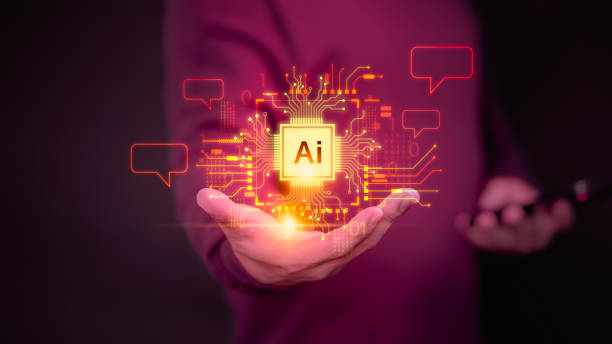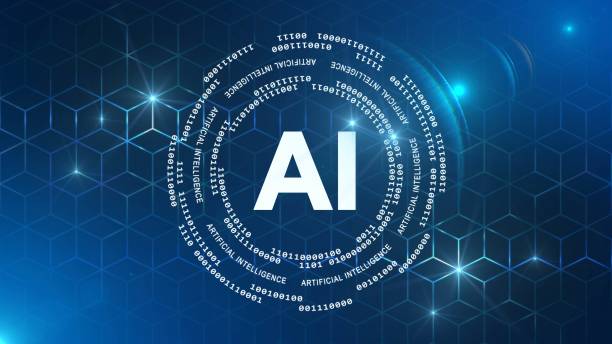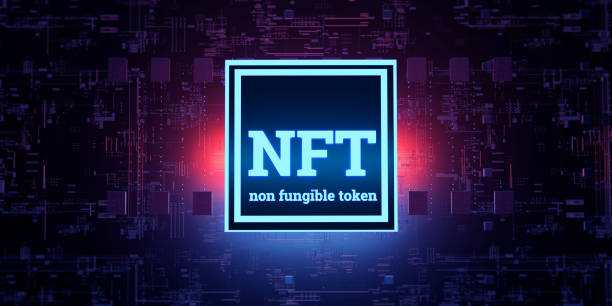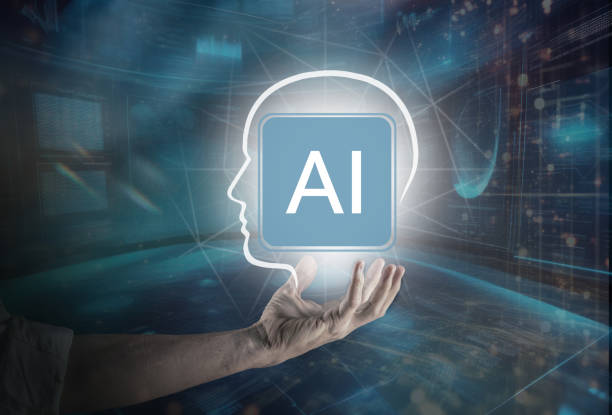What is an Artificial Intelligence Robot? Definition and Concept

In today’s world, the term Artificial Intelligence Robot is increasingly being heard.
But what exactly is an Artificial Intelligence Robot? Generally, an Artificial Intelligence Robot refers to a software or hardware agent that, using Artificial Intelligence algorithms, is capable of performing tasks that usually require human intelligence.
These tasks can include learning, problem-solving, decision-making, and pattern recognition.
In other words, an Artificial Intelligence Robot tries to mimic human cognitive abilities and allow machines to function intelligently without direct human intervention.
These robots can be used in various fields such as customer service, healthcare, manufacturing, and education.
For example, an Artificial Intelligence Robot can answer frequently asked questions from users on a website, assist a doctor in diagnosing diseases, or automatically manage a production line.
The variety of applications of Artificial Intelligence Robots is very wide, and with the advancement of technology, these applications are increasing day by day.
An Artificial Intelligence Robot, using machine learning techniques, is able to improve its performance over time, meaning that by collecting more data, it can make more accurate and effective decisions.
This feature has made Artificial Intelligence Robots a powerful tool for solving complex problems.
An Artificial Intelligence Robot is an emerging technology with great potential to change our world.
Does your current website create the trust that potential customers should have in your business? If the answer is negative, it’s time to have a professional and impactful corporate website with Rasaweb.
✅ Completely custom design tailored to your brand identity
✅ Increase lead attraction and credibility of your business in the eyes of customers⚡ Contact us for free consultation!
Types of Artificial Intelligence Robots
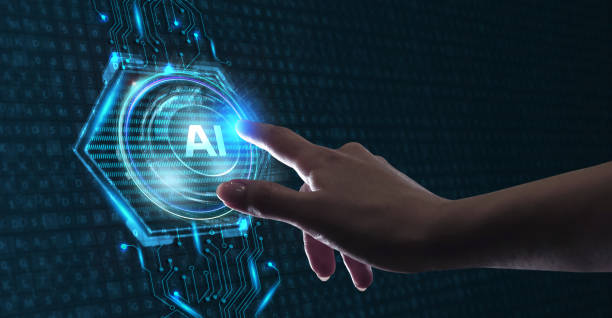
Artificial Intelligence Robots are divided into different types based on the type of tasks and their applications.
One of the most common classifications is based on their cognitive abilities and level of intelligence.
In general, Artificial Intelligence Robots can be divided into three main categories:
1.
**Limited Artificial Intelligence Robots:** This category of robots is designed to perform specific and defined tasks and has limited learning and adaptability.
For example, an Artificial Intelligence Robot designed to answer frequently asked questions from customers on a website falls into this category.
This robot can only answer questions that have been defined for it in advance and does not have the ability to understand and respond to more complex questions.
2.
**General Artificial Intelligence Robots:** This category of robots has broader cognitive abilities and can perform a variety of tasks.
They are able to learn, solve problems, and make decisions in various situations.
However, General Artificial Intelligence Robots are still in the early stages of development and have not yet fully reached the capabilities of human intelligence.
3.
**Super-Intelligent Artificial Intelligence Robots:** This category of robots surpasses human intelligence and can perform better than humans in all fields.
Super-Intelligent Artificial Intelligence Robots exist only hypothetically and, currently, no super-intelligent Artificial Intelligence Robot has been built.
In addition to this classification, Artificial Intelligence Robots can also be classified based on their type of application.
For example, Artificial Intelligence Robots in healthcare, Artificial Intelligence Robots in manufacturing, and Artificial Intelligence Robots in financial services are all examples of this type of classification.
Applications of Artificial Intelligence Robots in Various Industries
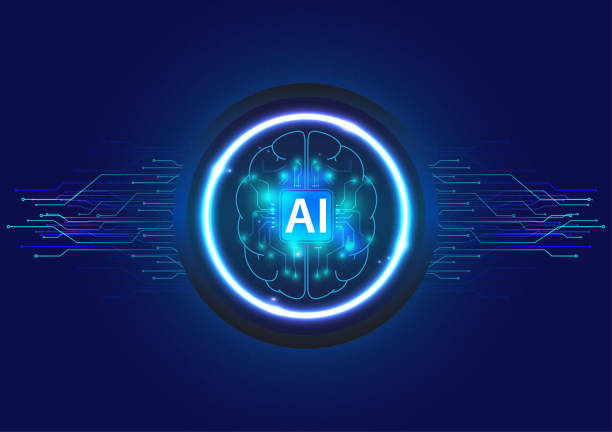
Artificial Intelligence Robots have many applications in various industries.
These applications are expanding day by day due to the ability of Artificial Intelligence Robots to automate tasks, increase productivity, reduce costs, and improve accuracy.
Here are some of the most important applications of Artificial Intelligence Robots in various industries:
1.
**Healthcare:** Artificial Intelligence Robots can play an important role in diagnosing diseases, providing personalized treatments, managing medications, and caring for patients.
For example, Artificial Intelligence Robots can analyze medical images such as radiographs and MRIs and help doctors diagnose diseases more accurately.
Also, Artificial Intelligence Robots can act as surgical assistants in complex surgeries and increase the accuracy and speed of surgery.
2.
**Manufacturing:** Artificial Intelligence Robots can be used in production lines to automate processes, control quality, and manage the supply chain.
For example, Artificial Intelligence Robots can assemble parts with high precision, inspect products, and identify potential problems.
This leads to increased production speed, reduced errors, and improved product quality.
3.
**Financial Services:** Artificial Intelligence Robots can be used to provide personalized financial services, detect fraud, manage risk, and automate banking processes.
For example, Artificial Intelligence Robots can analyze customer financial data and provide appropriate investment suggestions.
Also, Artificial Intelligence Robots can identify suspicious transactions and prevent financial fraud.
4.
**Customer Service:** Artificial Intelligence Robots can play an important role in answering customer questions, providing technical support, and solving their problems.
These robots can be available 24 hours a day, 7 days a week, and quickly answer customer questions.
This leads to increased customer satisfaction and reduced support costs.
5.
**Education:** Artificial Intelligence Robots can be used to provide personalized training, evaluate student performance, and provide feedback to them.
These robots can provide appropriate educational content according to the needs and abilities of each student.
Also, Artificial Intelligence Robots can continuously evaluate student performance and provide accurate feedback to them.
| Industry | Application | Benefits |
|---|---|---|
| Healthcare | Disease diagnosis, personalized treatment | Increased diagnostic accuracy, improved treatment outcomes |
| Manufacturing | Process automation, quality control | Increased production speed, reduced errors |
| Financial Services | Fraud detection, risk management | Reduced financial risk, improved security |
Advantages and Disadvantages of Using Artificial Intelligence Robots
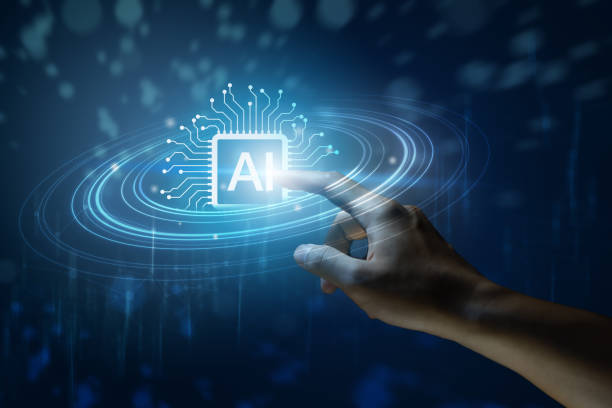
The use of Artificial Intelligence Robots has several advantages and disadvantages that must be considered.
Here are some of the most important advantages and disadvantages of using this technology:
**Advantages:**
1.
**Increased Productivity:** Artificial Intelligence Robots can perform tasks faster and more accurately than humans.
This leads to increased productivity and reduced costs.
2.
**Reduced Errors:** Artificial Intelligence Robots are less prone to error than humans.
This leads to improved product and service quality.
3.
**Automation of Repetitive Tasks:** Artificial Intelligence Robots can automatically perform repetitive and tedious tasks.
This allows humans to focus on more complex and creative tasks.
4.
**24-Hour Availability:** Artificial Intelligence Robots can be available 24 hours a day, 7 days a week.
This leads to better customer service.
**Disadvantages:**
1.
**High Cost:** Developing and implementing Artificial Intelligence Robots can be expensive.
2.
**Need for Expertise:** Developing and maintaining Artificial Intelligence Robots requires skilled professionals.
3.
**Ethical Concerns:** The use of Artificial Intelligence Robots can raise ethical concerns about privacy, discrimination, and job security.
4.
**Cognitive Limitations:** Artificial Intelligence Robots have not yet fully reached human cognitive abilities and may not perform well in complex and unpredictable situations.
Given the above advantages and disadvantages, it is necessary for organizations and companies to accurately assess their needs and goals before implementing Artificial Intelligence Robots and make decisions considering all aspects.
Did you know that 85% of customers check your company’s website before any interaction?
With Rasaweb, build a corporate website that deserves your credibility.
✅ Increased credibility and customer trust
✅ Attracting quality leads
⚡ Get free website design consultation
Challenges Facing the Development of Artificial Intelligence Robots
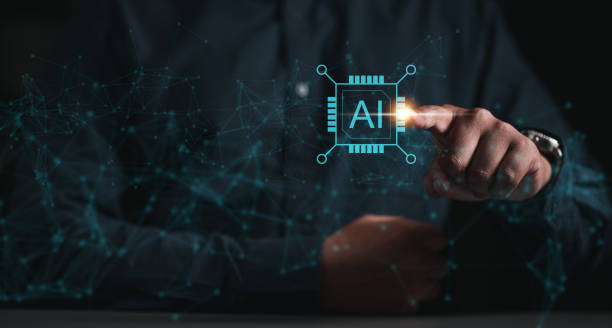
The development of Artificial Intelligence Robots faces several challenges that must be overcome to achieve the full potential of this technology.
Here are some of the most important of these challenges:
1.
**Data Scarcity:** Artificial Intelligence Robots need a large amount of data to learn and improve their performance.
In many areas, access to sufficient and high-quality data is a major challenge.
2.
**Algorithm Complexity:** Artificial Intelligence Algorithms are very complex and require specialized knowledge to design and implement them.
Developing new algorithms and improving existing algorithms is a continuous challenge.
3.
**Interpretability:** In many cases, Artificial Intelligence Robots make decisions whose reasons are not understandable to humans.
This can reduce trust in this technology and limit its use in some areas.
Developing Artificial Intelligence Algorithms that transparently explain their decisions is an important challenge.
4.
**Security:** Artificial Intelligence Robots can be vulnerable to cyber attacks and misused.
Ensuring the security of these systems is a very important challenge.
5.
**Ethical Issues:** The use of Artificial Intelligence Robots can raise various ethical issues.
For example, who is responsible for the decisions that an Artificial Intelligence Robot makes? How can discrimination be prevented in Artificial Intelligence Algorithms? Answering these questions is a fundamental challenge.
Overcoming these challenges requires the joint efforts of researchers, engineers, policymakers, and ethics experts.
By solving these challenges, we can benefit from the full potential of Artificial Intelligence Robots to improve human lives.
Artificial Intelligence Robots have great potential to change our world, but we must move towards their development and use with awareness and responsibility.
The Future of Artificial Intelligence Robots
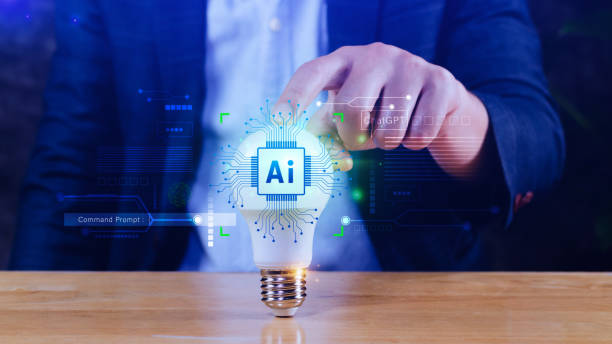
The future of Artificial Intelligence Robots is very bright and full of potential.
With the advancement of technology, Artificial Intelligence Robots are expected to play a more important role in our lives and revolutionize various fields such as healthcare, education, transportation, and manufacturing.
In the future, we will see the development of Artificial Intelligence Robots that are capable of deeper learning, solving more complex problems, and interacting more naturally with humans.
These robots can have a better understanding of natural language and communicate more effectively with humans.
Also, Artificial Intelligence Robots are expected to play a more important role in complex decision-making and help humans solve difficult problems.
One of the most important developments in the future of Artificial Intelligence Robots is the development of General Artificial Intelligence Robots.
These robots have broader cognitive abilities and can perform a variety of tasks.
General Artificial Intelligence Robots can play an important role in fields such as research and development, organization management, and creativity.
However, the development of General Artificial Intelligence Robots faces numerous ethical and social challenges.
It is necessary to carefully examine these challenges and provide solutions for managing them before achieving this technology.
One of the most important of these challenges is ensuring the security and control of General Artificial Intelligence Robots.
It must be ensured that these robots are used safely and responsibly and do not pose a threat to humans.
Artificial Intelligence Robots are a powerful technology that can help improve human lives.
However, we must move towards their development and use with awareness and responsibility.
The Role of Data in Artificial Intelligence Robot Learning
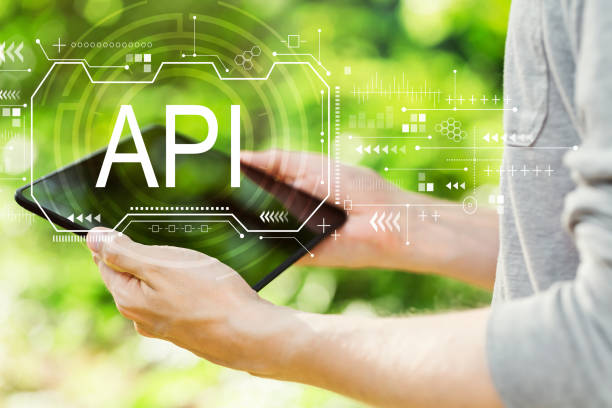
Data plays a vital role in the learning of Artificial Intelligence Robots.
Artificial Intelligence Robots need a vast amount of data to learn, identify patterns, make decisions, and ultimately perform their tasks correctly.
The more data available to an Artificial Intelligence Robot, the higher its accuracy and efficiency.
In other words, data is the fuel of Artificial Intelligence Robots.
Without data, Artificial Intelligence Robots will not be able to learn and improve their performance.
Different types of data can be used to train Artificial Intelligence Robots, including text data, image data, audio data, and numerical data.
For example, to train an Artificial Intelligence Robot that is capable of facial recognition, we need a large amount of images of different faces.
The more diverse these images are (in terms of age, gender, race, etc.), the more accurately the Artificial Intelligence Robot will be able to recognize faces.
Also, the quality of the data is very important.
Incorrect or incomplete data can lead to incorrect learning and improper performance of the Artificial Intelligence Robot.
Therefore, it is necessary to carefully review the data and ensure its accuracy and quality before using it to train the Artificial Intelligence Robot.
In addition, the way data is organized and labeled also affects the learning quality of the Artificial Intelligence Robot.
The data should be organized in such a way that the Artificial Intelligence Robot can easily identify patterns.
Also, the data must be labeled correctly so that the Artificial Intelligence Robot can understand the relationship between the data and the desired results.
Artificial Intelligence Robot is practically paralyzed without data.
Ethical and Legal Issues of Artificial Intelligence Robots

The development and use of Artificial Intelligence Robots are accompanied by several ethical and legal issues that should be given special attention.
These issues include privacy, discrimination, accountability, and security.
One of the most important ethical issues is protecting the privacy of individuals.
Artificial Intelligence Robots need to collect and analyze a lot of data to learn and improve their performance.
This data may include personal information of individuals that must be kept safe and confidential.
It is necessary to develop laws and regulations to protect the privacy of individuals against misuse of Artificial Intelligence Robots.
| Ethical Issue | Description | Solutions |
|---|---|---|
| Privacy | Collection and analysis of personal data | Developing data protection laws |
| Discrimination | Discriminatory decisions by robots | Developing fair algorithms |
| Accountability | Determining responsibility for mistakes | Creating accountability mechanisms |
Another issue to be addressed is preventing discrimination in Artificial Intelligence Algorithms.
Artificial Intelligence Algorithms may make discriminatory decisions based on their training data.
For example, an Artificial Intelligence Robot designed to hire people may unconsciously prefer people of a particular gender or race.
It is necessary to design Artificial Intelligence Algorithms in such a way that they are fair and non-discriminatory.
Also, accountability for the mistakes of Artificial Intelligence Robots must be determined.
If an Artificial Intelligence Robot makes a decision by mistake that leads to damage, who is responsible? Is the robot developer, the robot user, or the robot itself responsible? Answering these questions requires the development of new laws and regulations.
Artificial Intelligence Robot, despite its many benefits, requires attention to ethical and legal issues.
Are you frustrated with the low conversion rate of your online store?
Rasaweb is your definite solution with professional e-commerce website design!
✅ Increase your sales and revenue
✅ Unique user experience for your customers
⚡ Get free advice now!
How to Build an Artificial Intelligence Robot?

Building an Artificial Intelligence Robot is a complex and multi-step process that requires specialized knowledge and skills in various fields such as programming, mathematics, statistics, and artificial intelligence.
Here is a brief overview of the main steps in building an Artificial Intelligence Robot:
1.
**Define the Problem:** The first step in building an Artificial Intelligence Robot is to accurately define the problem that we want the robot to solve.
We must specify what tasks the robot should perform and what goals it should achieve.
2.
**Collect Data:** After defining the problem, we must collect the data needed to train the robot.
This data can be collected from various sources such as databases, websites, and sensors.
3.
**Prepare Data:** After collecting data, we must prepare it for training the robot.
This step includes cleaning the data, converting the data to a suitable format, and labeling the data.
4.
**Select Model:** After preparing the data, we must select the appropriate Artificial Intelligence Model to solve the problem.
There are different types of Artificial Intelligence Models, each of which is suitable for solving specific problems.
5.
**Train Model:** After selecting the model, we must train it using the prepared data.
In this step, the model learns patterns in the data and becomes capable of performing the desired tasks.
6.
**Evaluate Model:** After training the model, we must evaluate its performance.
In this step, we test the model using new data and measure its accuracy and efficiency.
7.
**Optimize Model:** If the model’s performance is not satisfactory, we must optimize it.
This step includes adjusting the model’s parameters, changing the model’s architecture, and using advanced learning techniques.
8.
**Implementation:** After optimizing the model, we can implement it in a real system.
In this step, we connect the model to a software or hardware and use it to perform the desired tasks.
Building an Artificial Intelligence Robot is an iterative process that may be repeated several times to achieve the desired result.
Artificial Intelligence Robot is a great achievement in the world of technology.
Key Concepts in Artificial Intelligence Robots
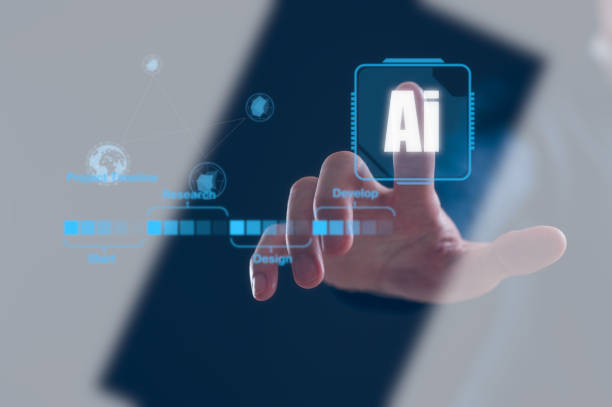
To better understand Artificial Intelligence Robots, it is necessary to become familiar with some key concepts in this field.
These concepts include machine learning, neural networks, natural language processing, and computer vision.
**Machine Learning:** Machine learning is a branch of artificial intelligence that allows machines to learn from data without explicit programming.
In machine learning, machines use specific algorithms to identify patterns in the data and are able to predict new outcomes.
**Neural Networks:** Neural networks are a type of machine learning model inspired by the structure of the human brain.
Neural networks consist of a large number of nodes (neurons) that are connected to each other.
Each node receives an input value, processes it, and produces an output value.
Neural networks are capable of learning complex patterns in data and are used in various fields such as image recognition, speech recognition, and natural language processing.
**Natural Language Processing:** Natural language processing is a branch of artificial intelligence that allows machines to understand and communicate with human language.
In natural language processing, machines use specific algorithms to analyze the structure and meaning of language and are able to answer questions, translate languages, and generate text.
**Computer Vision:** Computer vision is a branch of artificial intelligence that allows machines to understand images and extract information from them.
In computer vision, machines use specific algorithms to identify patterns in images and are able to recognize objects, recognize faces, and analyze scenes.
Artificial Intelligence Robot works based on these concepts.
Frequently Asked Questions
| Question | Answer |
|---|---|
| What is an Artificial Intelligence Robot? | An Artificial Intelligence Robot (AI Robot) is a machine capable of understanding the environment, reasoning, learning, and making decisions to perform tasks independently. |
| What is the difference between ordinary robots and Artificial Intelligence Robots? | Ordinary robots perform repetitive tasks based on prior planning, while Artificial Intelligence Robots can learn from experience, dynamically interact with the environment, and even behave in a way that resembles human intelligence. |
| What are the main applications of Artificial Intelligence Robots? | They are used in industries (manufacturing, assembly), medicine (surgery, diagnosis), services (customer support, home), exploration (space, underwater), and many other fields. |
| What technologies are used in building Artificial Intelligence Robots? | Machine Learning, Computer Vision, Natural Language Processing, Deep Learning, and Robotics are among the key technologies. |
| Can Artificial Intelligence Robots have emotions? | Currently, robots do not have emotions in the human sense. They can identify and react to emotions, but they do not experience emotions themselves. |
| What are the main challenges in the development of Artificial Intelligence Robots? | Safety, reliability, ethics, autonomy, adaptability to complex environments, and natural interaction with humans are important challenges. |
| How do Artificial Intelligence Robots train? | They are usually trained using large volumes of data, machine learning algorithms, and deep learning to identify patterns and make decisions. |
| Examples of Artificial Intelligence Robots in everyday life? | Smart robotic vacuum cleaners, customer support chat robots, self-driving cars, and surgical robots in hospitals. |
| Are Artificial Intelligence Robots a threat to human jobs? | Some repetitive jobs may be automated, but at the same time, robots can increase productivity and create new jobs in the development, maintenance, and monitoring of these systems. |
| How is the future of Artificial Intelligence Robots predicted? | They are expected to become smarter, more autonomous, and capable of performing more complex tasks, and to interact more closely with humans in various environments. |
and other services of Rasa Web advertising agency in the field of advertising
Smart Marketing Automation: A professional solution for online growth with a focus on custom programming.
Smart Direct Marketing: A combination of creativity and technology to increase website visits by optimizing key pages.
Smart SEO: Transform customer behavior with the help of accurate audience targeting.
Smart Direct Marketing: A creative platform for improving online growth with smart data analysis.
Smart Digital Branding: A combination of creativity and technology for digital branding through smart data analysis.
and more than hundreds of other services in the field of internet advertising, advertising consulting and organizational solutions
Internet advertising | Advertising strategy | Advertisement Report
Resources
What is a Smart Chat Robot and How Does It Work?
,Python Chatbot Tutorial
,What is a Chatbot? – In Simple Terms + Applications
,What is a Chatbot? A Comprehensive Guide to Types, Benefits and Applications
? Rasaweb Afarin is your trusted partner for business prosperity and visibility in the digital world. From modern user interface website design to comprehensive digital marketing strategies, we are with you.
Contact Rasaweb Afarin experts for advice and information about our services.
📍 Tehran, Mirdamad Street, next to the Central Bank, South Kazerun Alley, Ramin Alley No. 6

